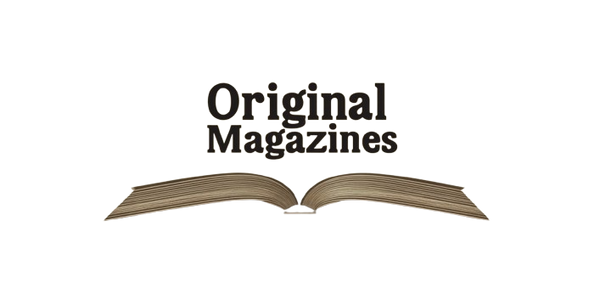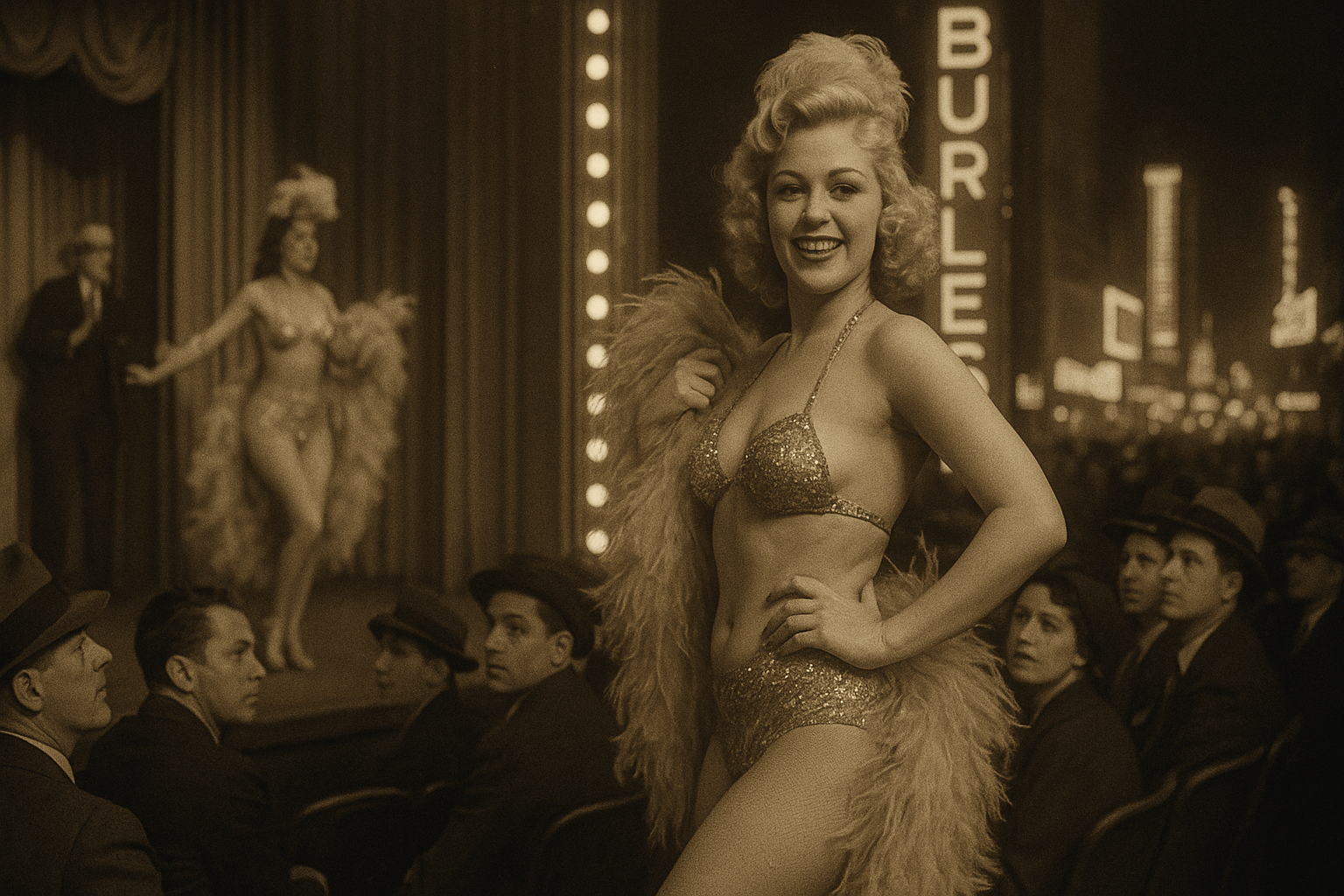Burlesque Battles, Broadway Lights, and The New Yorker’s Tour of Minskyville
When readers picked up the May 28, 1932 issue of The New Yorker, they held more than just a humor magazine. They were stepping into a portrait of Depression-era New York, where moral reformers clashed with entertainers, where hardship met spectacle, and where satire became a lens for understanding the times. This particular issue carried a standout “Reporter at Large” feature titled “A Tour of Minskyville” — a witty exploration of the burlesque theaters clustered around Times Square that had become both scandal and sensation.
For readers in 1932, this was more than entertainment reporting. It was a cultural map of the contradictions of modern America — a reminder that even in economic despair, the battles over morality, art, and humor carried on under the glow of Broadway lights.
The spring of 1932 was one of the hardest moments of the Great Depression. Unemployment reached nearly 25%, banks continued to fail, and political uncertainty loomed as the nation awaited the presidential election that would eventually bring Franklin D. Roosevelt to power. In New York, breadlines stretched through neighborhoods, even as theaters, cabarets, and burlesque houses filled with audiences looking for escape.
Burlesque, the subject of “A Tour of Minskyville,” was at the center of heated debate. Critics saw it as immoral, corrupting public decency at a fragile time. Defenders insisted it was cheap, necessary entertainment that gave working-class audiences laughter when they needed it most. The Minsky brothers, led by Billy Minsky, stood at the heart of this controversy, running a network of theaters that were as beloved by audiences as they were targeted by reformers.
By profiling Minskyville with irony and sophistication, The New Yorker placed itself directly in the cultural conversation. Its reportage captured the humor of the burlesque shows, the absurdity of reform battles, and the broader question of what counted as art in Depression-era America.
By 1932, The New Yorker had already distinguished itself as the magazine of urban sophistication. It didn’t print sensationalist exposés or moral crusades. Instead, it delivered profiles, satire, commentary, fiction, and cartoons that exposed the humor and contradictions of modern life.
The “Minskyville” feature fit perfectly into this tradition. Written with dry irony, it described the theaters as both seedy and essential, portraying reformers and showmen alike as characters in a comedy of cultural conflict. Rather than choosing sides, it let readers see the farce in the struggle itself.
Other parts of the issue reinforced this mission. Advertisements promoted European travel, perfumes, telephone calls from Paris, and even Saratoga Geyser water — luxuries and amusements that stood in stark contrast to Depression-era hardship. Cartoons added understated humor, while essays captured the mood of the city.
In short, this issue showed how The New Yorker became more than a humor magazine. It was a cultural lens, blending journalism, art, and satire to make sense of America in crisis.
The cover of the May 28, 1932 issue, designed by Julian de Miskey, featured a chic, modern woman surrounded by a collage of colorful European travel posters. On the surface, it was whimsical and aspirational — a nod to cosmopolitan style and leisure. But in the middle of the Depression, when most Americans could not afford such luxury, the cover carried a sly undertone of irony. It suggested the contrast between fantasy and reality, aspiration and limitation.
Inside, the cartoons and illustrations amplified this tone. A drawing by John Reehill depicted a doctor scolding a patient in bed with the caption: “Are you going to take your medicine, or muss I pank you?” Like so many New Yorker cartoons, its humor lay in understatement — making the everyday absurd without ever exaggerating.
Even the advertisements became part of the magazine’s storytelling. “Betty telephones us from Paris now and then,” proclaimed an ad for overseas telephone service, complete with a glamorous illustration of a woman making a call abroad. A Saratoga mineral water ad promised purity and health, while travel agencies promoted Mediterranean cruises. These ads reinforced the magazine’s signature juxtaposition: aspirational luxury and wry cultural commentary side by side.
Together, the cover, cartoons, and ads created the visual wit that defined The New Yorker. They were not background material but part of the narrative fabric that made each issue both elegant and satirical.
The feature essay gave readers a guided tour of the theaters that reformers derided as indecent but audiences adored. Among its highlights:
Burlesque as Popular Escape – The article depicted burlesque as affordable, democratic entertainment in the heart of Manhattan. For a few cents, working-class New Yorkers could laugh, cheer, and forget their troubles.
The Reformers’ Battle – Civic groups and the License Commissioner repeatedly sought to shut down the theaters, charging them with corrupting public morals. The article painted these efforts as both serious and faintly absurd, exposing the comedy in the crusade itself.
Minsky as Master Showman – Billy Minsky was presented not as a villain but as a pragmatic showman, tailoring his productions to audience desires while outmaneuvering reform campaigns.
A Cultural Mirror – The piece showed that burlesque wasn’t just entertainment — it was a reflection of Depression-era anxieties and contradictions, where laughter and censorship collided nightly under Broadway’s lights.
Each of these elements combined into a larger narrative: that the story of burlesque was not just about risqué jokes or striptease but about the very struggle over culture and morality in modern America.
For collectors, the May 28, 1932 issue of The New Yorker is more than paper — it is a time capsule of cultural history.
Why it’s collectible:
-
Historical Timing – Published in the depths of the Depression, this issue reflects how New Yorkers balanced hardship with spectacle.
-
Memorable Cover – Julian de Miskey’s colorful travel poster collage is one of the more striking covers of the early 1930s.
-
Unique Feature – “A Tour of Minskyville” is a rare contemporary profile of burlesque theater, making it especially valuable to cultural historians.
-
Cartoons and Ads – Original cartoons and advertisements provide insight into Depression-era consumer culture and aspirations.
-
Scarcity – Early 1930s New Yorker issues are increasingly rare in collectible condition, raising their appeal for serious collectors.
Holding this issue is not just owning a magazine — it’s preserving a record of how humor, art, and social tension played out in the streets and theaters of 1932 New York.
Vintage New Yorker magazines endure because they are more than periodicals. They are artifacts of cultural life, combining literature, satire, and art in a way that captured the American spirit.
Each issue remains a window into its era. In 1932, the laughter of burlesque, the anger of reformers, and the glamour of aspirational ads all mingled on its pages. Today, these issues remind us that even in times of despair, humor and sophistication were tools for survival.
Unlike fleeting digital media, these magazines were made to last. Their covers were art, their essays literature, and their cartoons timeless. For collectors and cultural historians, they remain indispensable.
If you’re intrigued by the May 28, 1932 issue of The New Yorker, there’s much more to discover.
👉 Browse the full collection of authentic vintage New Yorker magazines here: OriginalMagazines.com – The New Yorker Collection
From the burlesque debates of the 1930s to the cultural criticism of later decades, The New Yorker documented nearly a century of American history through satire, art, and literature.
The May 28, 1932 issue of The New Yorker remains one of the most distinctive portraits of Depression-era culture. With its witty Julian de Miskey cover, understated cartoons, glamorous ads, and the satirical feature “A Tour of Minskyville,” it captured a city caught between hardship and spectacle, morality and laughter.
For today’s collectors, it is not just a magazine. It is a living artifact of cultural history — a reminder that even in the hardest years of the Depression, New Yorkers laughed, argued, and filled theaters night after night.
Holding this issue is holding 1932 itself: the humor, the controversy, and the resilience of a city that never stopped performing.

